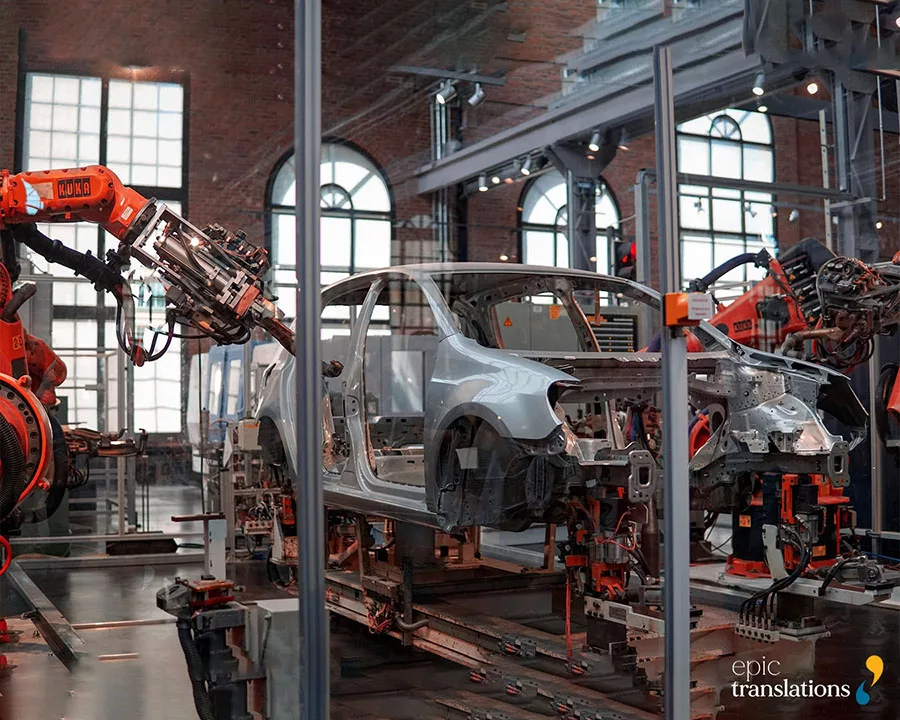
Among the 35 million citizens in Saudi Arabia, 31% fall within the age range of 30 to 44, 26.6% are aged between 15 to 29, and 24.5% are below the age of 15. This demographic distribution highlights distinct opportunities that American businesses are well-placed to leverage.
Everybody knows that Saudi Arabia makes a lot of money from selling oil. The economy took off in the 1970s and 1980s and has been growing ever since. Lot of economic activity takes place in English and Arabic translations might not be needed for your industry.
In 2022, Saudi Arabia spent a whopping US $140 billion on importing goods and services. If you’re already exporting your products, you know there’s a great chance to boost your profits.
Moreover, Saudi Arabia (along with UAE and 4 other countries) became a member of BRICS on January 01, 2024. Jihad Azour, the International Monetary Fund’s director for the MENA region states that “the addition of the two major Gulf economies to the bloc will increase the level of linkages between the region and the rest of the world and they will improve capacity to attract investment.” All in all, there will be more economic action happening in Saudi Arabia over the next 20 years.
Keep reading to find out how your company can take advantage of this exciting new economic landscape.

Where does Saudi Arabia import most of its products from?
Looking at the numbers from 2022, more than half (53.7%) of Saudi Arabia’s imports were from Asian suppliers. Europe contributed 26.1%, while North America made up 11.9%.
What are Saudi Arabia’s top 10 imports?
According to the World’s Top Exports website, the product categories listed below indicate the largest dollar amount that Saudi Arabia imported in 2022.
- Vehicles: $17.6 billion (12.5% of total imports)
- Machinery including computers: $15.9 billion (11.4%)
- Electrical machinery, equipment: $11 billion (7.8%)
- Mineral fuels including oil: $5.58 billion (4%)
- Pharmaceuticals: $5.55 billion (4%)
- Cereals: $4.45 billion (3.2%)
- Iron, steel: $4.1 billion (3%)
- Plastics, plastic articles: $3.9 billion (2.8%)
- Gems, precious metals: $3.8 billion (2.7%)
- Furniture, bedding, lighting, signs, prefabricated buildings: $3.8 billion (2.7%)

What are Saudi Arabia’s biggest automotive imports?
The following product categories show the highest dollar amount that Saudi Arabia imported in 2022.
- Cars: US$12.6 billion (⬆️ 5.9% from 2021)
- Trucks: $1.8 billion (⬆️ 77.9%)
- Automobile parts/accessories: $929.3 million (⬇️ -23.2%)
- Tractors: $699.2 million (⬆️ 197.8%)
- Armored vehicles, tanks: $674.2 million (2021 data unavailable)
- Special purpose vehicles: $323 million (⬆️ 17.5%)
- Public-transport vehicles: $164.5 million (⬇️ -2.9%)
- Trailers: $142 million (⬇️ -20%)
- Motorcycle parts/accessories: $66.8 million (⬇️ -11.1%)
- Motorcycles: $53.7 million (⬆️ 61.2%)
The fastest-growing Saudi purchases between 2021 and 2022 were tractors (⬆️ 197.8%), vehicles (⬆️ 77.9%), and motorcycles (⬆️ 61.2%)
Can I conduct business in Saudi Arabia in English?
Even though a considerable number of imported workers and younger citizens can understand and communicate in English, businesses should primarily operate in Arabic.
The majority of the population speaks Arabic, and it is anticipated that user guides and marketing materials will be presented in Arabic.

Is Arabic translation needed for our marketing material?
We strongly suggest translating or localizing your supporting documents (such as product manuals, user guides, legal agreements, marketing material, website copy, etc.) into Arabic. If you prefer not to go through the Arabic translation process, you can also create your documents directly in Arabic.
Can we translate our documents using AI translation software?
The prowess of AI translation shines brilliantly when handling Indo-European languages, yet the mystique of Arabic, a Semitic gem, remains untouched by its transformative embrace.
With its intricate and opulent morphology, Arabic presents a formidable challenge for AI and machine translation in bridging the linguistic gap with Western counterparts.
Consequently, the quest for precision and reliability in rendering your content into Arabic becomes a captivating odyssey for machines and software, navigating the intricate tapestry of this language’s linguistic landscape.
Teaming up with a certified and experienced translation services provider for your documents can significantly impact your sales, revenue, and reputation in Saudi Arabia.
Companies like EPIC Translations have a team of skilled and qualified Arabic translators with experience in various industries. They can also develop a translation memory (TM) tailored to your terminology, ensuring consistency across all your content.
Moreover, human translators can also address issues, such as:
- Words that cannot be directly translated
- Specific grammar rules
- Capturing meaning as opposed to translating words one at a time
- When to ask for clarification
- Finding the best translation through industry knowledge
- Cultural considerations
- Specific industry lingo
CAUTION: If you plan to sell products and services in Saudi Arabia, be cautious when using AI-translated content.
Start your journey with EPIC Translations
We deliver high-impact English to Arabic translation (as well as Arabic to English translation) that simplify your communications with your clients, staff, suppliers, and partners in Saudi Arabia.
Simply put, EPIC Translations exists to support your content translation needs whether you need to translate product manuals, company newsletters, apps / website copy, or legal documents.
Check out a quick video about EPIC Translations down below!
Need a quote for your next Arabic translation project? Fill out the form below, and we’ll be in touch shortly. Or, give us a call at (888) 214-2053.
Error: Contact form not found.
[:]